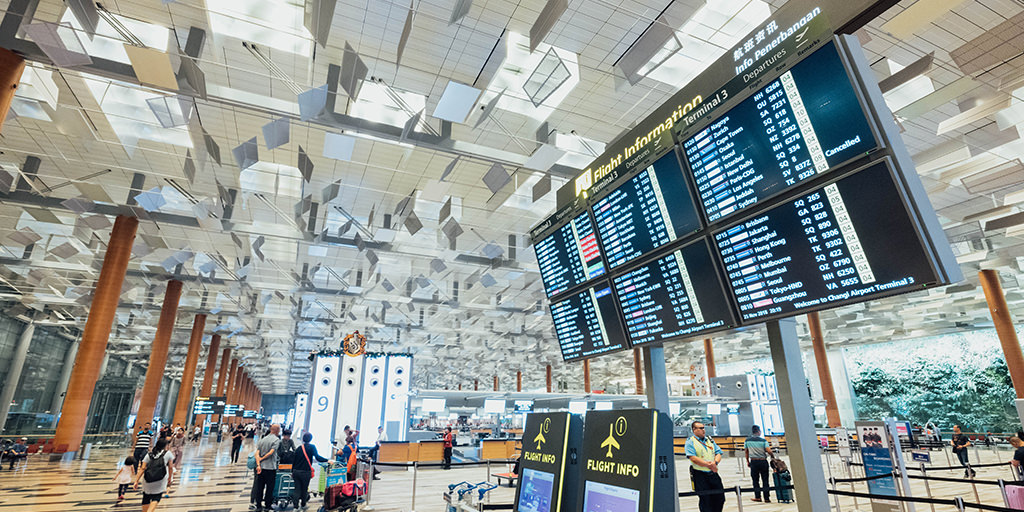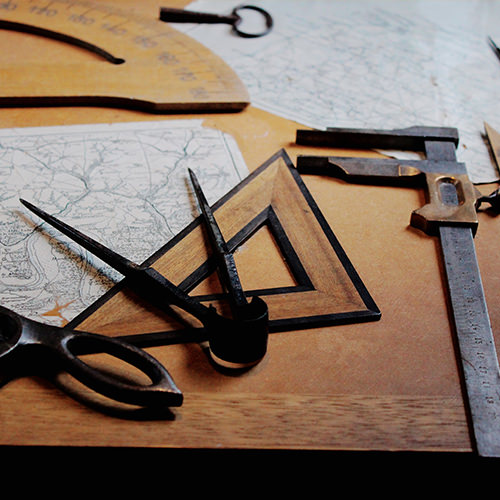Air travel is anything but simple. Walk into any airport, and you’re immediately confronted with ticket counters, security lines, people standing around, people waiting for their loved ones, and usually a coffee shop or two. All this is going on while you’re trying to figure out where to check in and thinking: “Is my flight delayed?” “What’s my gate number?” “Will this be the time the airline finally loses my luggage?” It’s a hectic scene both in physically and mentally.
By the end of 2018, U.S. airports saw more than 244 million passengers come through their doors. The sheer volume of travelers invites high numbers of flight delays, poor experiences, and frustrated customers leading to horror stories around the world.
We sat down with Designer Virginia Wood to speak about a terrible travel experience she recently had and how it inspired her to create Travel Ease, a mobile app that aims to help distressed travelers everywhere feel more empowered by having access to critical information and choices at their fingertips.
At Cantina, we strive to create digital products and services that seamlessly fit into people’s lives. What inspired you to build this app?
I’m not sure if “inspiration” is the correct word, but what should have been an easy connecting flight home after a long trip overseas turned into a horrible experience. My flight back to Boston kept getting delayed, eventually becoming an 8-hour debacle. None of the passengers knew what was going on and neither the airline nor the airport staff explained what was causing the delay. After sitting in the airport for hours, other passengers and I started talking to each other about how frustrated we were by the lack of communication. The airline representatives gave misinformation on the reasons for the delay and refused to tell us when we might be boarding. No one felt comfortable leaving the gate area in fear that we would miss the flight.
It seemed like a mobile app could help to better provide passengers with basic airport information, a chat option to reach customer service representatives, and the ability to manage connecting, delayed, and missed flights. Additionally, there are also smaller, less urgent issues that an app could easily handle, like having clear instructions on where to go after passing through border control and customs checkpoints or highlighting good spots to hang out in the airport during long waits.
Traveler User Journey - travelers want to make connecting flights within a quick and allowed timeframe, in the quickest and most stress-free way.
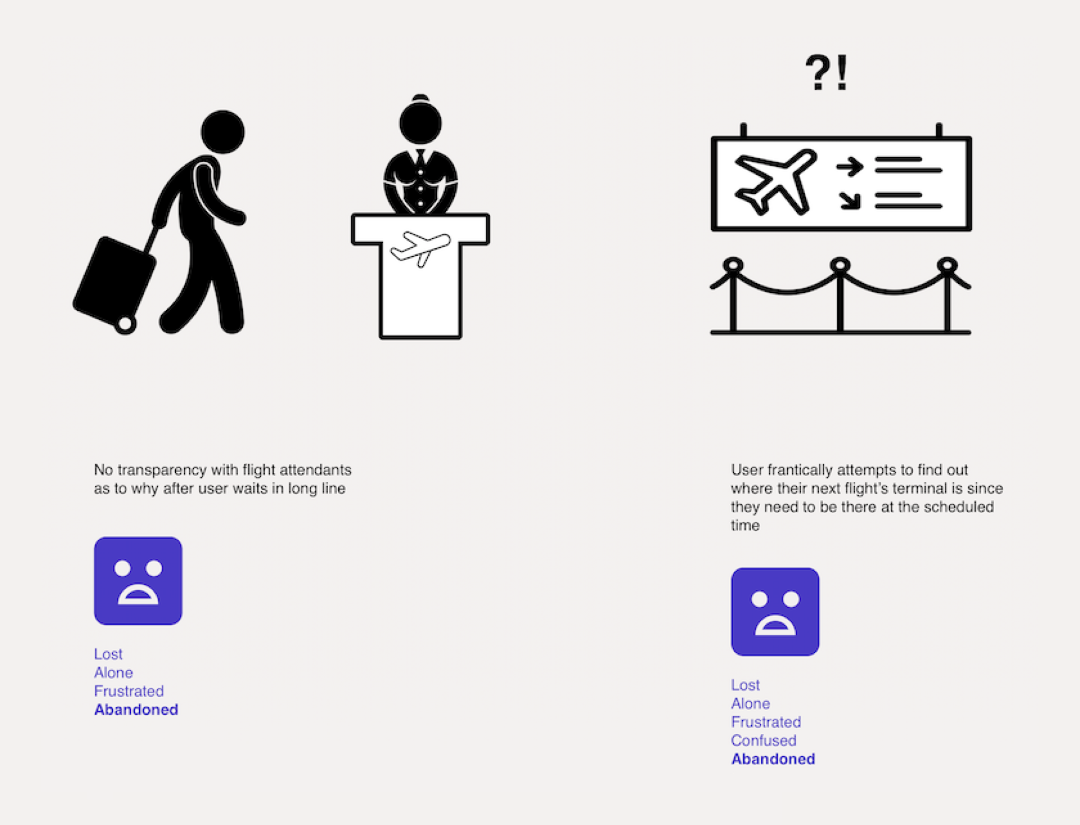
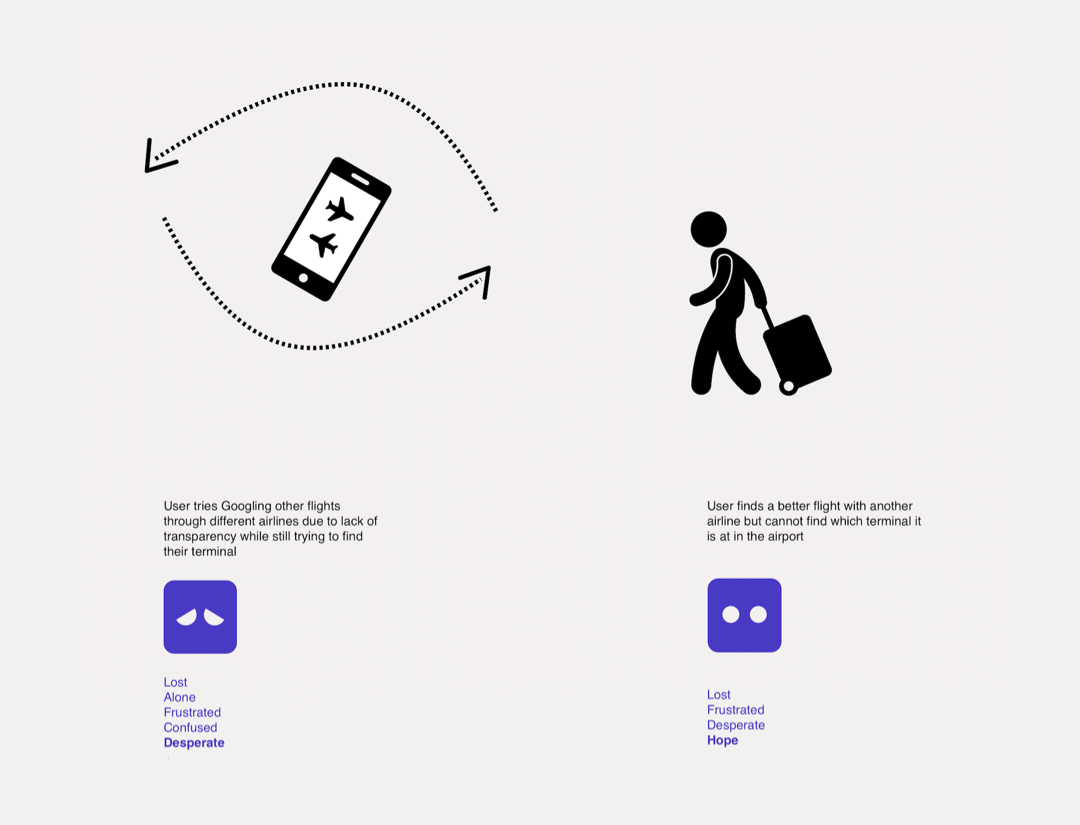
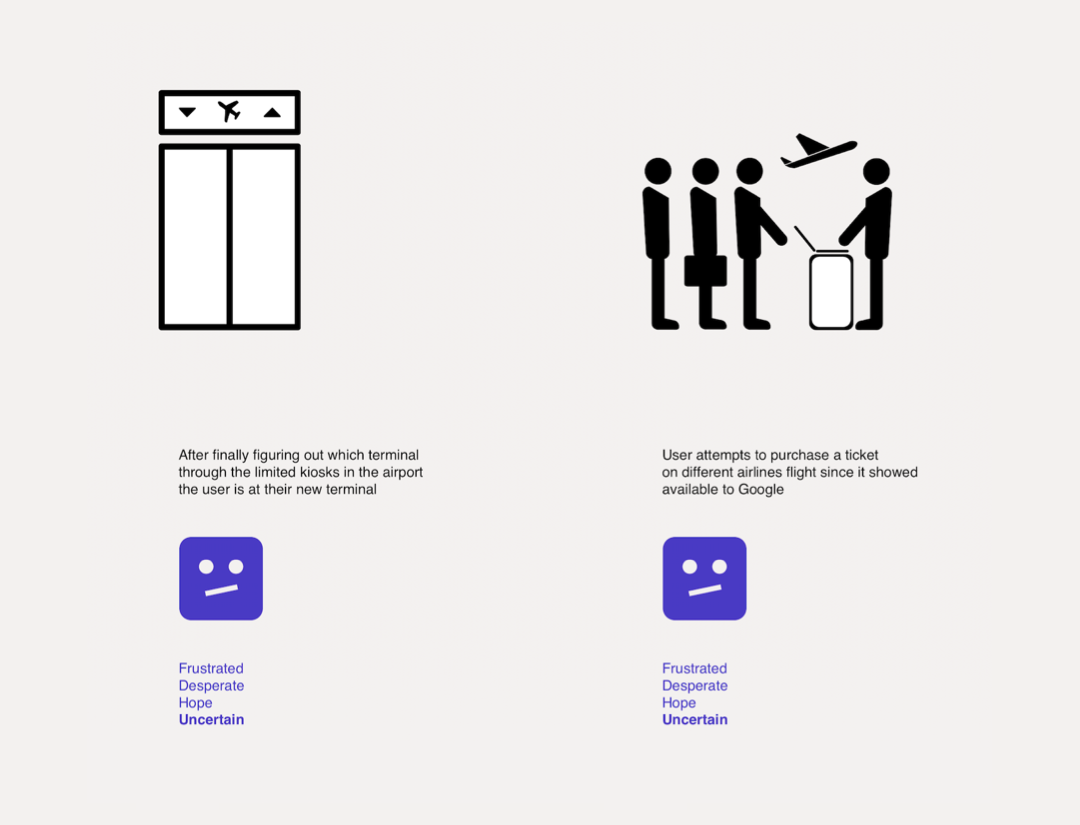
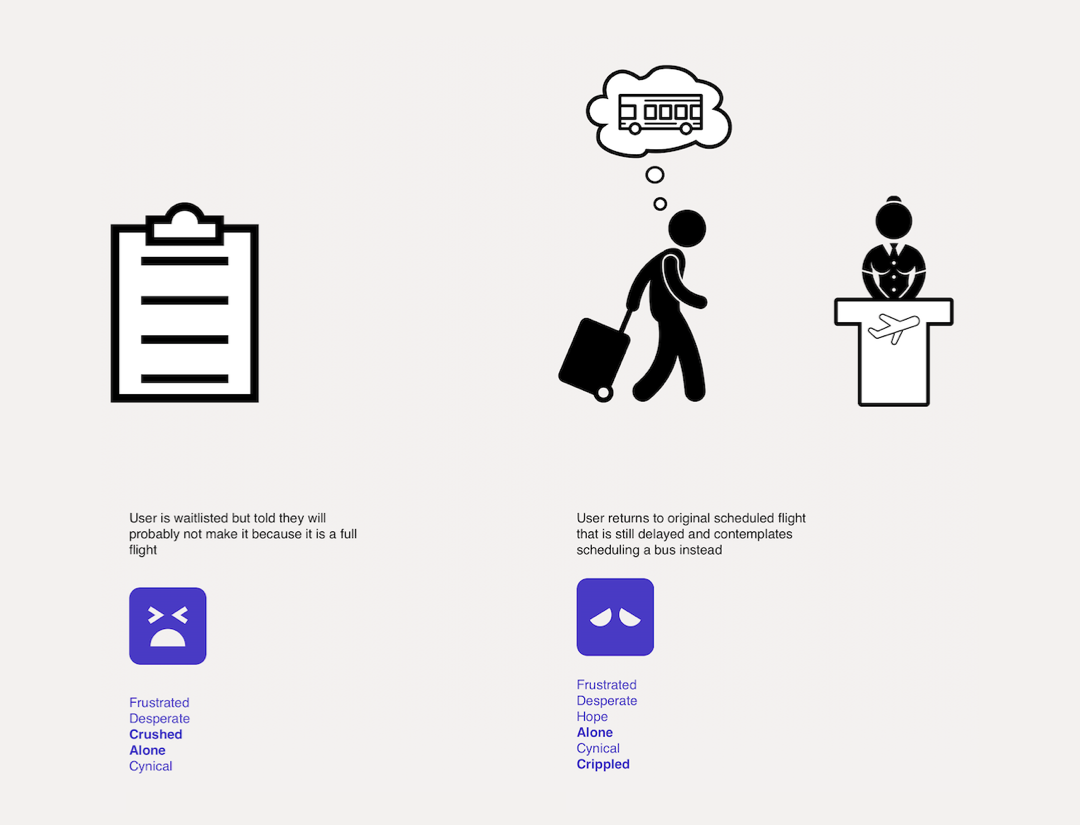
What type of research did you do to help validate your solution?
I did a lot of searching for existing apps that are similar to what my idea entails, but there is nothing as comprehensive as Travel Ease, which attempts to merge airline information with airport services. I also realized from my research that the market for mobile apps specifically focused on air travel is very fragmented: each airline has its own app with patented algorithms to handle situations like missed flights. The problem with those algorithms is that they don’t account for layover times or don’t fit the needs of every passenger, and so, by design, they are incomplete in their capabilities.
There isn’t any app available that really encapsulates the entire airport-to-airline experience to help you make decisions and feel better about challenging situations.
What was the most pressing issue or challenge you wanted to address with this project?
The most pressing issue to handle is building trust and goodwill with travelers, or, in this case, users of the Travel Ease app. Because of my experience, I have lost faith in this airline. Travel Ease addresses the issues that would force a traveler to feel this aversion, no matter the chosen airline. Designers constantly ask ourselves, “What do we want the user to feel?” But as a customer, the question becomes, “How can this help?” The answer to both questions is similar: to make the experience better. The goal is to increase transparency and knowledge, empowering users to feel comfortable, make more informed decisions, or have additional peace of mind that someone, or something, is here to help in these debilitating situations.
What design aspects of your app overcome some of the obstacles you have outlined?
The real value of design comes with passive use of the app. If we can suspend disbelief for a moment, if you’re about to miss your flight, the app would go to work while you’re still in the air to offer alternatives or even book the best option if the user inputs what they’re willing to pay. The app will provide fast alternatives sooner, instead of your having to locate an airline help desk upon landing, which can bog down both airlines and passengers for hours. While there are technical limitations to consider, I think a feature like this could positively impact how people travel.
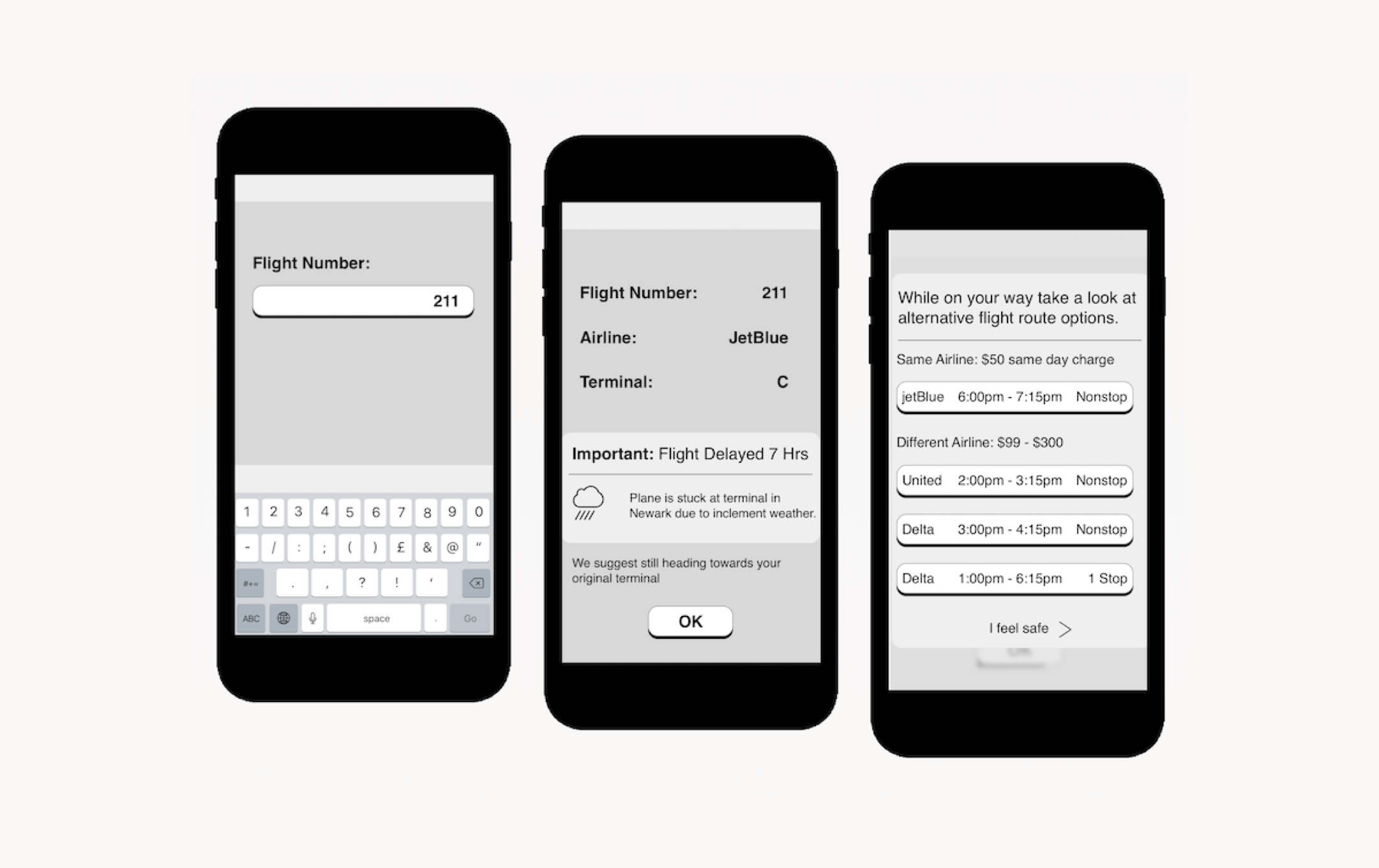
In a perfect world, Travel Ease will also work with airlines and airports to deliver detailed information that makes travelers feel less stressed overall. These features may include a library of airport maps with a comprehensive list of amenities, indicators for available seating near electrical outlets, restaurant recommendations, estimates for how long it takes to walk to each terminal gate, and real-time high-traffic area notations with alternate routes and shortcuts provided. In this way, app users will enjoy extra benefits to truly enhance their flying experience.

What experiences or insights informed your design approach?
I learned through my own experience that when a problem, such as a layover-gone-bad situation, affects a large group of people from the same airplane, each flier goes through a similar emotional experience. Based on how I felt, and my peers’ shared feelings, on this trip, I wanted to create something that would be easy to use, transparent, and informative, to the point that when someone is in that situation again but has Travel Ease, the experience could actually flip from “horrific” to “unfortunate, but pleasant.”
What would your next steps be if you wanted to see this project launch?
One of the initial challenges would be getting people to adopt the app. We need travelers to begin using it for issues we can handle without involvement from airlines. Then, we could start to approach stakeholders to add features that require integrating airport and airline information. Perhaps the initial version of Travel Ease is a system that simply identifies flight alternatives that you can book yourself. Once people start using the app, it could be built out to provide a comprehensive suite of amenities to provide enduring value to travelers who need on-hand guidance to get through a potentially miserable experience.
If you’re interested in learning more about Travel Ease or have a similar project you’d like to talk about, please send us an email.
